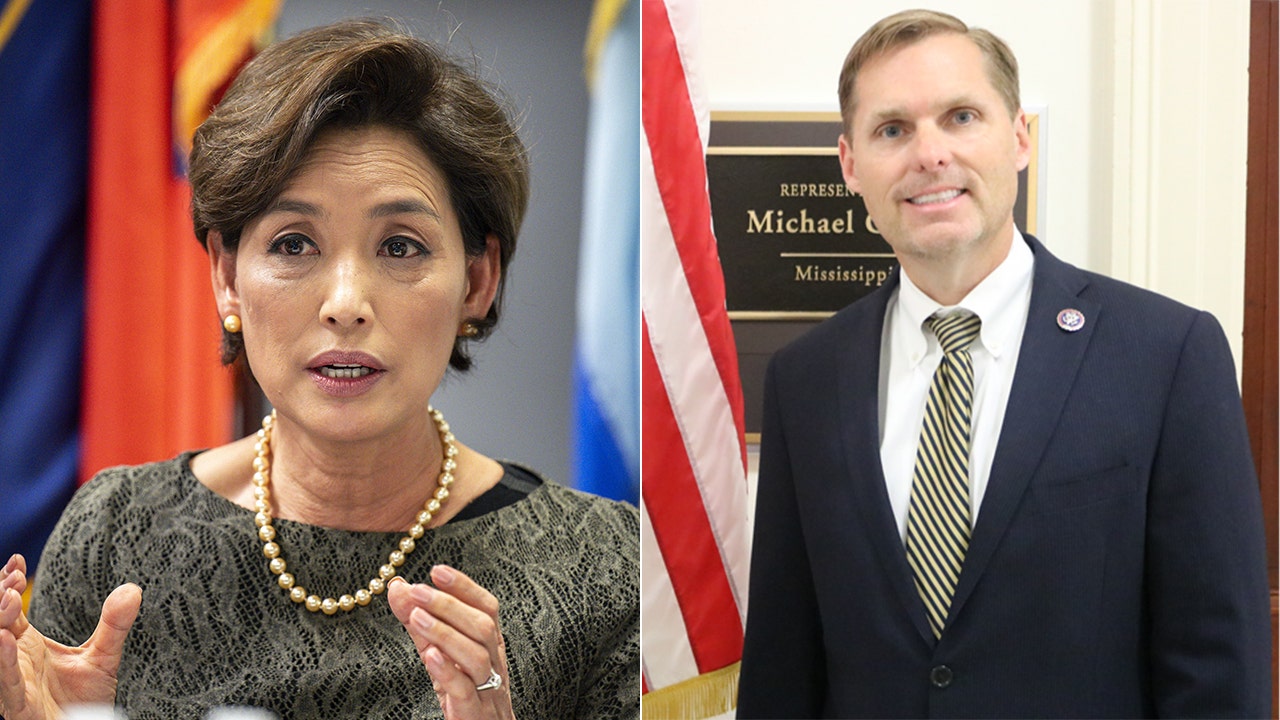Picture this: The Democrats were all set to deliver a knockout punch on their critique of the border bill, only for it to blow up in their faces. Yep, that's right. The critique they thought would strengthen their position ended up turning into a political boomerang. Now, everyone's scratching their heads, asking, "What just happened?" So, let's dive deep into the chaos, shall we?
The drama around the Democrat's border bill critique has been heating up like a summer day in Arizona. It's not just about the policies anymore; it's about the narrative, the strategy, and the unintended consequences that came with it. This isn't your average political debate—it's a full-blown spectacle that has everyone glued to their screens.
But here's the kicker: understanding why the critique backfired is crucial. Because if you're paying attention, this isn't just about the Democrats or Republicans—it's about how political messaging can go horribly wrong when it doesn't align with public sentiment. So, buckle up, folks. This is gonna be one wild ride.
Read also:Steelers Sign 9m Quarterback Solution The Gamechanging Move You Canrsquot Miss
Understanding the Democrat's Border Bill Critique
Before we break down the fallout, let's talk about what the critique was all about. The Democrats aimed to highlight what they saw as flaws in the border bill, arguing that it didn't go far enough to address the root causes of migration or provide humane solutions. Sounds reasonable, right? But here's the thing: the message got lost in translation.
What Was the Core Message?
The Democrats framed their critique around three main points: the bill's lack of comprehensive immigration reform, its potential impact on asylum seekers, and the need for more resources at the border. These are valid concerns, but the way they were presented left much to be desired.
- Comprehensive reform: The Dems argued that the bill was too focused on enforcement and not enough on creating pathways for legal immigration.
- Asylum seekers: They claimed the bill could make it harder for asylum seekers to access protection, which sparked outrage among advocacy groups.
- Resources: The critique emphasized the need for more funding to support border infrastructure and personnel.
But here's the rub: while these points were well-intentioned, they didn't resonate with the average voter. And that's where things started to unravel.
Why Did the Critique Backfire?
Now, let's get into the nitty-gritty. Why did the Democrat's critique end up shooting themselves in the foot? There are a few reasons, and they're all worth exploring.
1. Misreading Public Sentiment
One of the biggest issues was that the Democrats underestimated how the public felt about the border crisis. While they focused on long-term solutions, many Americans were more concerned with immediate action to address the influx of migrants. This disconnect between the party's messaging and public priorities created a perfect storm of backlash.
2. Lack of Unity Within the Party
Here's another kicker: the Democrats weren't exactly singing from the same hymn sheet. Progressive voices within the party pushed for more radical changes, while moderates tried to strike a balance. This internal divide only served to confuse voters and weaken the overall message.
Read also:Senator Accuses Musk Of Silencing Gop A Deep Dive Into The Controversy
3. Media Coverage and Perception
Let's not forget the role of media in shaping public perception. The way the critique was covered by different outlets played a significant role in how it was received. Some portrayed it as a strong stance on immigration reform, while others painted it as a political stunt. This inconsistency further muddied the waters.
The Impact on Public Opinion
So, what happened next? Well, the backlash was swift and fierce. Polls showed that the Democrat's critique not only failed to gain traction but also alienated some of their base. Voters who were already skeptical of the party's approach to immigration became even more disillusioned.
How Did Voters React?
The reaction was a mixed bag. Some voters appreciated the Democrats' focus on long-term solutions, but many felt that the party was out of touch with the realities on the ground. This sentiment was particularly strong in swing states, where the border issue is a major concern.
What Can We Learn From This?
Alright, so now that we've unpacked what went wrong, what lessons can we take away? For starters, political messaging needs to be clear, concise, and aligned with public sentiment. If you're trying to critique a bill, make sure your points are not only valid but also relatable to the average voter.
Key Takeaways
- Understand your audience: Know what matters to them and tailor your message accordingly.
- Unity is strength: Parties need to present a united front to avoid confusion and weaken their stance.
- Media matters: Be mindful of how your message will be perceived by different media outlets.
These lessons aren't just for the Democrats—they're applicable to anyone trying to navigate the complex world of political communication.
Looking Ahead: What's Next for Immigration Policy?
So, where do we go from here? The border bill debate is far from over, and both parties will continue to push their agendas. But one thing is clear: the Democrats need to rethink their strategy if they want to regain the trust of voters on this issue.
Possible Future Moves
Here are a few possibilities for what the Democrats might do next:
- Refocus their messaging to emphasize practical solutions that address immediate concerns.
- Work on building bipartisan support for comprehensive immigration reform.
- Engage more with grassroots organizations to better understand the needs of communities affected by migration.
It won't be easy, but with the right approach, they could turn this setback into an opportunity for progress.
Data and Statistics: The Numbers Don't Lie
Let's take a quick look at some numbers that highlight the complexity of the immigration issue. According to a recent study by the Migration Policy Institute, over 11 million undocumented immigrants currently reside in the U.S. That's a significant number that underscores the need for effective policy solutions.
Additionally, data from the U.S. Customs and Border Protection shows that border apprehensions have been on the rise, with over 2 million encounters in 2022 alone. These figures paint a picture of a system under immense pressure, making it all the more important to get the policy right.
Expert Opinions: What the Experts Say
When it comes to immigration policy, the experts have a lot to say. Many legal scholars and policy analysts argue that the current system is outdated and in dire need of reform. They point to successful models from other countries, such as Canada's points-based system, as potential solutions.
But here's the thing: implementing such changes won't be easy. It will require political will, public support, and a willingness to compromise. And that's where the real challenge lies.
Conclusion: Where Do We Go From Here?
So, there you have it—the Democrat's border bill critique backfired, and now they're faced with the daunting task of regaining trust and credibility on this issue. But here's the silver lining: every setback is an opportunity to learn and grow.
If you're passionate about immigration reform, now's the time to get involved. Whether it's through advocacy, voting, or simply staying informed, your voice matters. And who knows? Maybe together, we can create a system that works for everyone.
So, what do you think? Did the Democrats drop the ball, or was this just a momentary stumble? Let us know in the comments below, and don't forget to share this article with your friends and family. The more we talk about these issues, the closer we get to finding real solutions.
Table of Contents
- Understanding the Democrat's Border Bill Critique
- What Was the Core Message?
- Why Did the Critique Backfire?
- Misreading Public Sentiment
- Lack of Unity Within the Party
- Media Coverage and Perception
- The Impact on Public Opinion
- How Did Voters React?
- What Can We Learn From This?
- Key Takeaways
- Looking Ahead: What's Next for Immigration Policy?
- Possible Future Moves
- Data and Statistics: The Numbers Don't Lie
- Expert Opinions: What the Experts Say
- Conclusion: Where Do We Go From Here?


